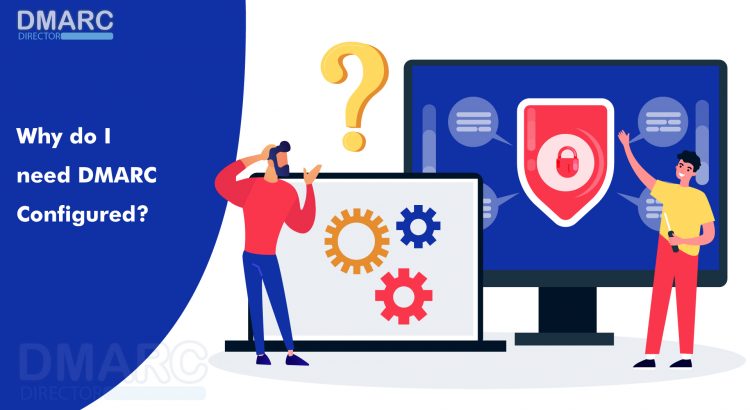DMARC, or Domain-based Message Authentication, Reporting, and Conformance is a crucial email authentication protocol that helps protect email senders and recipients from spam, phishing, and other types of email fraud. If you’re a business owner or administrator responsible for managing email for your organization, you may have heard of DMARC and wondered why it’s important to have it configured. This article will explain why DMARC is essential and how it can benefit your organization.
First, let’s take a closer look at how DMARC works. When an incoming email arrives at its destination, DMARC checks the “From” field in the header to see if it matches the domain of the sender’s email server. If the domains don’t match, DMARC can block the email or mark it as spam. This helps prevent spam or phishing emails from being delivered to your inbox and protects you from inadvertently clicking on malicious links or providing sensitive information to hackers.
Now, let’s explore the top four reasons why you should configure DMARC for your domain:
Protect your reputation:
DMARC can help protect your domain from being used in spam or phishing attacks, damaging your reputation and leading to decreased deliverability of your legitimate emails. Email providers may be less likely to deliver your emails to their users’ inboxes when your domain is associated with spam or phishing. By implementing DMARC, you can demonstrate to email providers that you are taking steps to secure your domain and prevent its use in spam or phishing attacks. This can help improve the deliverability of your legitimate emails and protect your reputation.
Improve deliverability:
Implementing DMARC can directly improve your emails’ deliverability. When you configure DMARC, you’re telling email providers that you’re committed to securing your domain and protecting your users from spam and phishing. As a result, email providers may be more likely to deliver your emails to their users’ inboxes rather than sending them to spam folders or blocking them entirely.
Protect your users:
DMARC can help protect your users from receiving spam or phishing emails that appear to come from your domain. By blocking these emails, you can prevent users from clicking on malicious links or providing the sensitive information to hackers. This can help reduce the risk of cyber-attacks and keep your users safe.
Reduce spam and phishing:
Configuring DMARC can reduce the spam and phishing emails sent using your domain. This can help protect your users and improve the overall security of the email ecosystem. By taking steps to secure your domain and prevent its use in spam or phishing attacks, you can contribute to the overall health and security of the email industry.
In conclusion, DMARC is an essential email authentication protocol that can help protect your domain, improve the deliverability of your legitimate emails, protect your users, and reduce spam and phishing. If you’re responsible for managing email for your organization, make sure to configure DMARC to take advantage of these benefits.
